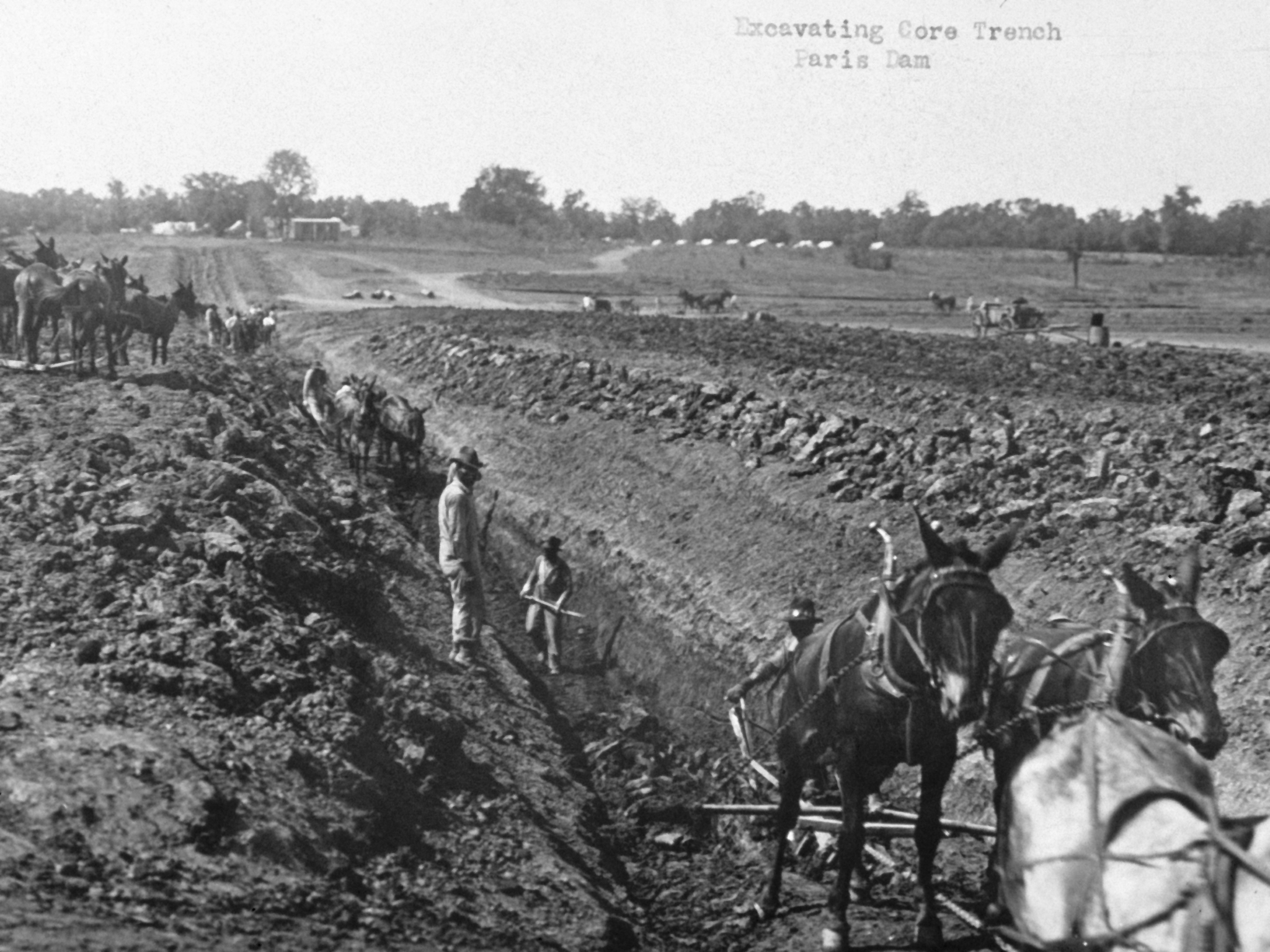Then and Now: From Mules to Drones

Then: A New Water Supply for Paris
After our founder, Maj. John Hawley, returned from military service in France in 1919, one of his first postwar assignments was to study and report on a new $1 million municipal water supply for Paris, Texas. After months of collecting and examining rainfall records and other data, Hawley recommended a dam and reservoir on Pine Creek to impound a surface water supply of 4 billion gallons, enough to meet the needs of present and future generations.
As planning progressed on the project, a young engineer from Paris joined Hawley’s consulting practice in 1922. Simon Freese detailed the reinforcing steel for the spillway abutments, then computed the reinforcing steel for the filter plant. Freese’s hometown reservoir would be the first of more than 200 dam and reservoir projects in his career.
Later that spring, the City of Paris approved the plans for the water supply system, which included the dam and reservoir, rapid sand filtration plant, elevated tank, and transmission pipeline. After a year of construction — including mule labor, pictured — the dam was finished by mid-1923. The new reservoir was named Lake Crook in honor of longtime Paris Mayor J.M. Crook.
Now: Texas’ First New Reservoir in 30 years
Just 23 miles west of Lake Crook, Bois d’Arc Lake went into service in 2023 as an essential new water source for 2 million North Texans in more than 71 cities. Texas’ first new major reservoir in nearly 30 years, the 16,641-acre lake is located on a tributary of the Red River.
The North Texas Municipal Water District partnered with Freese and Nichols on the $1.6 billion Bois d’Arc Lake Program, which has received national attention and won multiple awards for engineering excellence.
Numerous entities and stakeholders collaborated over two decades of planning, permitting, design and construction to complete the program. Freese and Nichols served as the overall program manager, designed major components for the reservoir and provided extensive permitting and resident construction management services.
At the heart of the system is a 236-MGD raw water pump station with a footprint the size of a football field. This system is the first in Texas to combine low-flow reservoir releases within the pump station facility to meet all downstream environmental requirements, reducing capital and operations and maintenance costs. Freese and Nichols also designed the 2-mile-long, 90-foot-tall earthen dam; a treated water pump station; 210-MG terminal storage reservoir; and transmission pipelines.
Construction progress was extensively documented using drone photography and video.
The program’s multiple components include more than 17,000 acres of ecological improvements. The lake opened to the public for recreational use in April 2024.

